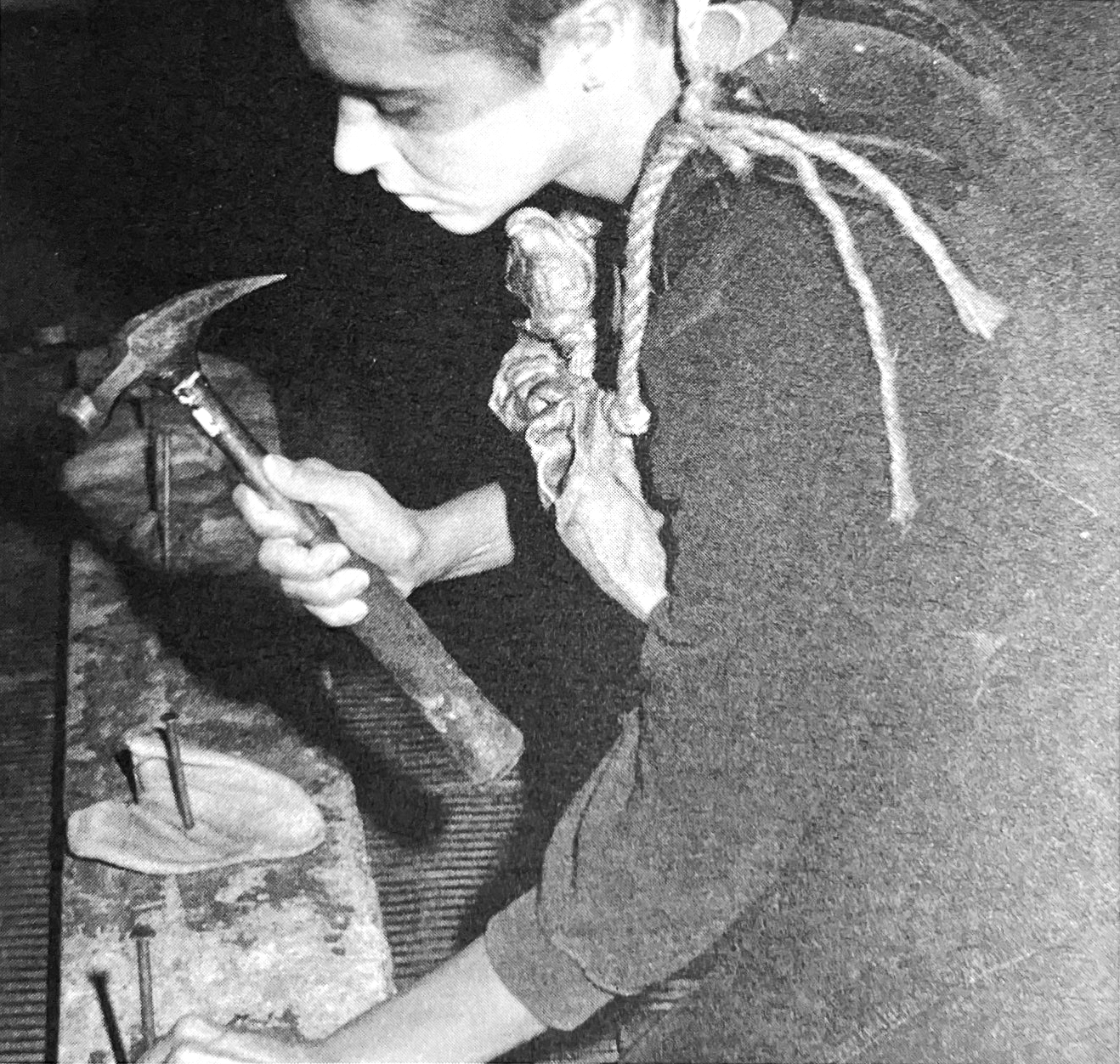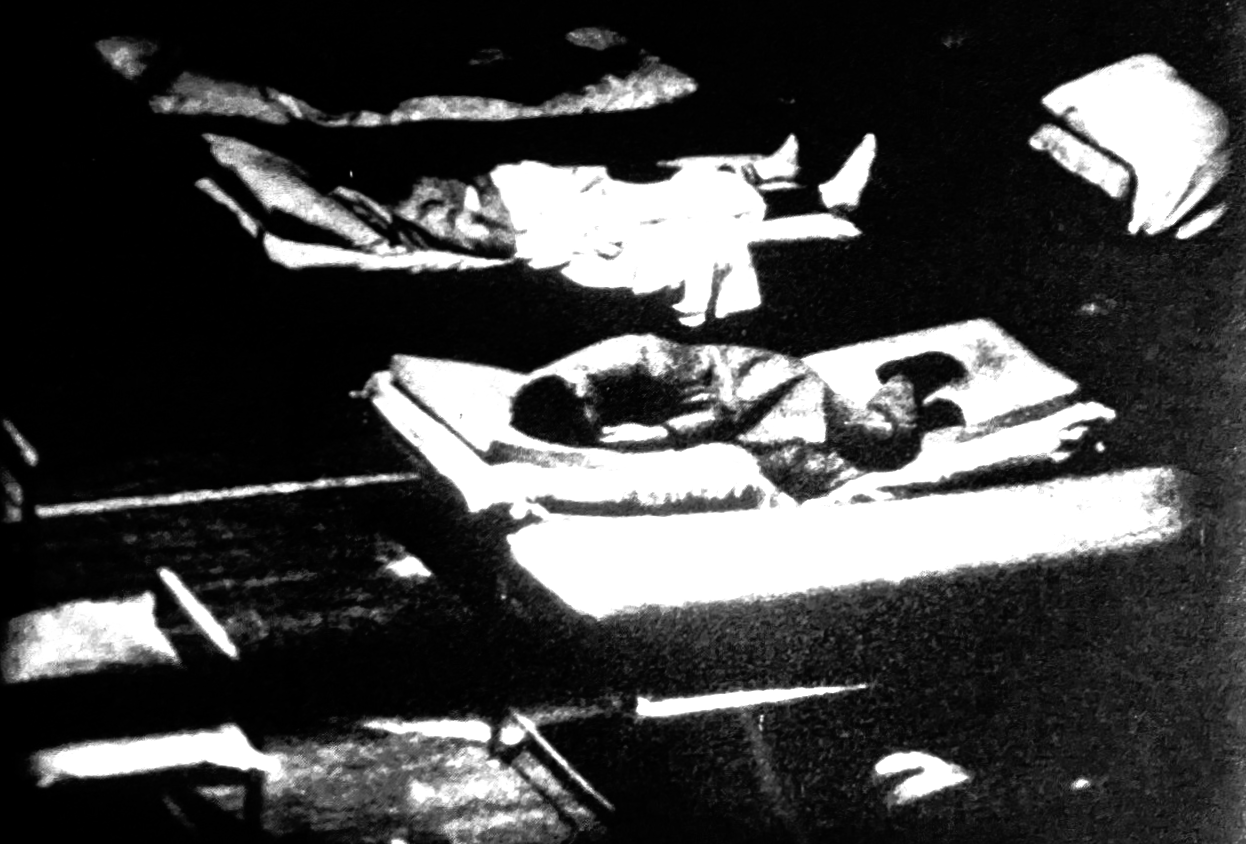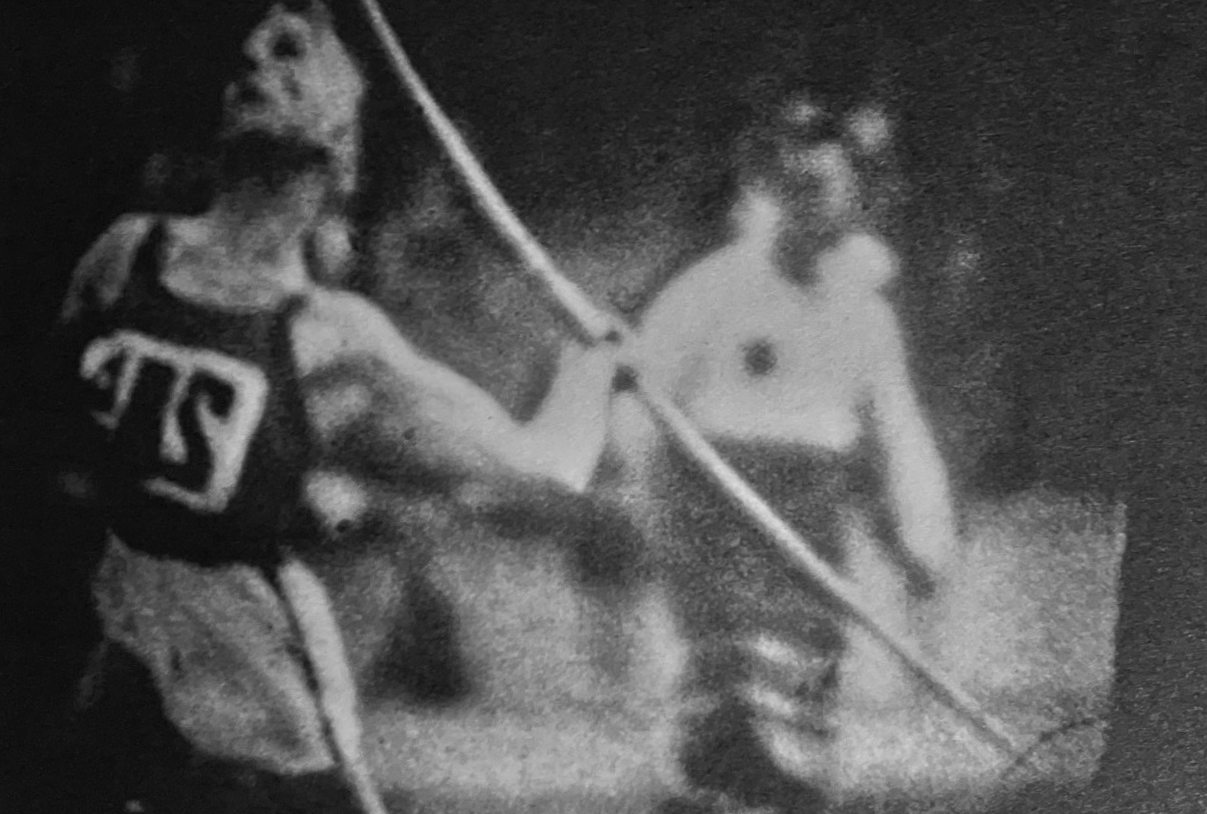In three parts:
THE PIGEARS AND THE GALLERIES. September 5-19. 85
It began with coming home. Returning to New York after a European and a Middle Eastern working absence. Often when one comes home after a period of time, things seem to have suddenly changed.
We were simply confronted with what we had ignored before, an outside reality we had been close to.
The art seemed now more meaningless, the galleries more commercial than ever, the political consciousness seemed to have faded completely and the housing situation was more crucial and threatening.
We believed the new galleries to be a part of the problem. Of course we were made aware very soon that we too were intruders and that we all were in the same boat.
"Everybody is just trying to survive here," said a friend who also runs a gallery.
Yes, survival again, but we were convinced that there was a different intention behind this kind of survival. We felt homeless with our anger and thinking. We felt an immediate statement was necessary and a fast move - a kind of street attack, very different from our usual way of working.
We decided to strike the galleries and confront the artists, "the blue ribbon plum pigs," that seemed to evade any form of responsibility towards the ongoing state of change on the Lower East Side. We chose to make our attacks when most people were at the galleries, the "high times" of the openings. A fast appearance - arriving in an old van, the nailing of pigears into the door frames, hanging pigears on ropes to tie the entrance doors closed - guerilla approach.
We ourselves, in black armors, white faces, garlands of fresh pigears around our necks like trophies.


The ears did not last long, neither did we!
At Gracie Mansion Gallery a co-owner walked with raised arms through the space, our long rusty nails with ears sticking through them were held in his hands. At M13 and Limbo Lounge, it took about 30 seconds until we were physically removed from the spaces by owners eager to defend their newly renovated galleries.
After the third day, the police started to follow us. Not much sense of experimentation seemed left in this part of town. We had made the mistake of sending a list of our appearances to various newspapers, foolishly hoping for publicity.
We changed our tactics and started to appear in places off the list. To confront mass with mass we started to recruit a small army, clad in pigears. To allow a more reflective reaction to the activities, we decided to forego the act of trespassing and defacement. The ignorant reactions of the supposedly sophisticated audience were quite disturbing. Comments like, "Their faces are painted white, does that mean they don't like blacks?" were disheartening.
With our chance-provoking appearances, we gave up control over space, light, sound, and timing for the impact of immediacy; we hoped that the anger of the image and the urgency of the statement would be enough to stimulate the imagination and concentration of our audiences. Unfortunately, our experiences brought us straight back to reconfirming the necessary use of the old methods of visual tricksters.
We decided to put a halt to our attacks because we could not rid our feelings of fighting against dead matter. We had to direct our efforts and energies towards a more constructive way of expressing that anger.
A PERFORMANCE: UNTITLED. November 3. 85
It was a foreign time, a time ahead of us. what is now subtle, was the law. we were walking down the street. we turned right on first. there was nothing but an empty field. a field of rubble. the house was gone. eliminated. leveled out. I couldn't believe. it was like a hallucination. I ran. ran, looking between the bricks. I was paralyzed, not capable of finding my anger. I stood there poking the ground. the ones who have and the ones who don't, it was very clear, inescapable, pressing. to have a place to live. a home, it was a matter of life and death. we knew that. they had bombed it. overnight. they said it had become dangerous for the people living in it. it could have collapsed at any time. they had to do it. they were very sorry about this. we knew they wanted the ground. we knew houses were power. that's how they controlled the poor. to eliminate them, now us.
the head of miss Liberty a body falling
shocked viewers, turning their heads, pointing their fingers a door that is closed in front of a person, abruptly, over and over again bodies curled up on street corners between trashcans
rows of beds without mattresses a sand clock running out
A work to reflect nightmarish and grotesque aspects of "home" and the "art-mak-ing process" and to confront the issue of mental and physical homelessness as well as an emphasis towards artists' responsibility not to become "blue ribbon plum pigs."
The Installation
An empty lot, a field of trashy leftover parts of living, remnants of burned-out cars.
Fronted on two sides by small buildings, across the street a seven-storey-high burned out facade and in the back more emptiness all too real for a Hollywood war-fantasy set.
The audience faces the burned-out building.
On the right side a plastic-covered low enclosure, a bluish embryo-bubble.
On top of a rusty gym staircase, another plastic-covered bluish tower-like habi-tation, just wide enough to stand upright; a metal slide coming down diagonally on its other side, a barrel on the ground.
A tall painted target figure, a sling shot.
A screen attached to an empty van.
Right in front of the audience, a black ring at eye level, the size of a lifesaver attached by orange elastic strings to the ground and to somewhere in the invisible dark above the heads of the audience.
The ground is sandy, the light dim.
The Action
Barrels with fire.
Two ghostly pale, black-dressed figures, each isolated in their house-like enclo-sures, freezing cold.
The ticking of time, removed as through earplugs, heavy.
A voice, faint, very, very slow describes a dream sequence:
Film images flash onto the building next door:
Ticking time, still. Closer.
The figures leaving their enclosures, slowly, heavily.
One walks to the center of the ground, goes onto her knees, gets up as if following an unheard signal shot, runs towards the audience. Stopped by the lifesaver between them, she bounces back, falls to the ground, gets up, walks back, turns around, onto her knees, up again and runs into the ring, falls again and again.
The other figure picks up the barrel, bangs it against the slide and starts walking up, standing diagonally in the air, moves the barrel with her feet higher and higher until she falls over the barrel noisily and down to the ground, tries once more.
The figures move in circles from one object to another, counterclockwise, isolated from each other, along with the ticking sound.
One writes on the screen: HOME.
As the other shoots against the high target figure, stone after stone, hitting the metal.
One crosses out aggressively the words on the screen: HOME IS WHERE
The ticking is constant.
Run into the ring, fall back, up on the slide, trip over the barrel, again, more words: WHERE THE HEART IS
more noise, faster, much faster, breathless, useless, endless
HEART - ART
a jackhammer found
hitting it against the car parts
the barrel is falling,over it
the machine overturns
suddenly stops
the bodies fall
fall to the ground
finally silence
. . . . .
another song, gentle, calling out into the void, an echo comes back
the bodies crawl, breathing into the sand,
slowly, exhausted
one up the stair, one across, back to the enclosures
a projection onto a building:
Facts and Relations
a head in flames
flames
the house in flames
burned, burned-out
TO TEST THE STRENGTH OF BODIES, BOTH PHYSICAL AND MENTAL, FORCING THEM THROUGH STRENUOUS ACTIVITIES, USING OURSELVES AS GUINEA PIGS TO REPRESENT AN OUTSIDE WHICH WENT FAR BEYOND OURSELVES, OUR BODIES.
HOMELESSNESS, A REALITY THAT IS UNDENIABLY PHYSICAL, HAD TO BE REPRESENTED IN THE MOST PHYSICAL WAY POSSIBLE.
This activity caused us total exhaustion and physical injury.
The question comes up, of course, how useful is it to injure oneself in a performance or artwork to make one's statement? How far does one automatically enter a self-destructive realm with this kind of approach? This is not a new question.
In our case, the live performance became a form of exorcism caused by the various difficulties we had encountered during the process of this piece and by the weight of the subject itself.
However conceptually provoked the physical exhaustion was, it turned out to be quite true in the end.
Afterwards, we learned that our shock-realistic approach had made many people in our audience feel extremely uncomfortable. It had been painful to watch.
We were criticized as being too negative.
But wasn't that the point?
Displacement was the issue that we wanted to force, force to a point of repulsion.


But what an ironic situation we were to encounter!
Besides the usual problems any independent low budget performance artist has to face while working outdoors (the fact that 8BC, our original host, had been closed down by the building department for hideous reasons only topped that situation), we were confronted with the actual reality of our subject.
We were going to appear as intruders, despite our different intentions.
In the beginning of this work, we talked at length with the people in the neighborhood about the project. They were enthusiastic about it, at least at first. But after a while, those two white women carrying around bizarre objects, became slightly suspicious to them. As the temperature dropped, the tension grew. We couldn't hang around and eat the empanadas they offered to us.
We had made arrangements to use some of the burned-out cars on the lot as part of the installation. No one around objected.
But we were in for a rude awakening: we found a man living in a van among the cars.
A slap in our own faces. We were now guilty of what we were blaming others for. We were contradicting ourselves.
Unfortunately, there was hardly a way to speak with the man. Each attempt drew attacks from him and his giant pitchfork.
We started to work around him and his van, but the threats didn't cease.
Absurd as it was, we had displaced him with our ignorance of these flexible street-laws of privacy. We had invaded his borders.
A painful clash of two different ways of living. Our intentions would not serve as a bridge towards understanding.
During the performance we still heard him verbally threatening those bastard artists, reinforcing the threats with crashing bottles and firecrackers.
Could we blame him?
A CITY WITHIN THE CITY


- exploration into the possibilities of building new forms of communities.
- for the use of wasted energy and space in an overcrowded society.
- manifestation of artists' responsibilities to recognize and challenge a denied aspect of this society: the displaced and homeless.
Since there exists no sense that displaced people are accepted as an active part of this society, a community of their own has to be developed.
THE PERFORMANCE IS THE FORMING OF THESE TEMPORARY COMMUNITIES, THE PRESENTATION OF A POSSIBLE ALTERNATIVE WAY TO EXIST.
A Proposal for One Hundred Performers/Participants.
Each performer is provided with an inflatable unit/house that can easily fit one person.
One unit can be transported by one person on the back like a crate.
Each unit is painted orange like a signal.
To provide necessary heat, the units are placed on subway air grates or a simple pipe system can attach them to the air exhaust of laundromats, for example.
The units are for living, storage or mail deposit.
Materials are fireproof and water resistant.
The look of the units may vary depending on specific needs for comfort and/or aesthetics of each tenant.
Units can be attached to each other to build walls, circles, etc.
A PIECE DESIGNED FOR THE NOMADS OF THE CITY.
THE PERFORMERS ARE REAL PEOPLE WITH REAL LIVES.
A PERFORMANCE ABOUT PEOPLE MIGRATING THROUGH A
DESERT CITY.
THE ACT OF MOVING LIKE A SNAIL WITH ONE'S HOUSE ON ONE'S BACK.
A manifestation of HOME as a necessary part of SELF.